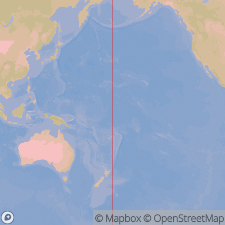
- Usage in publication:
-
- Matuyama reversed epoch*
- Modifications:
-
- Named
- AAPG geologic province:
-
- Cosmopolitan
Summary:
Named as a worldwide geomagnetic polarity change probably after geophysicist M. Matuyama whose study of volcanic rocks in Japan and Korea was first successful attempt to determine age of switch from reversed-polarity epoch to present normal-polarity epoch. Same magnetic polarity (normal or reversed) is cosmopolitan in volcanic rocks of the same age. Geomagnetic field changes abruptly at boundaries of certain time intervals which authors have termed polarity epochs. Duration of transitions between epochs are likely less than 50,000 yrs. Though polarity epochs are of two types and are represented by rocks of either normal or reversed polarity, mixed polarity epochs are theoretically possible though none have yet been observed. Name replaces previously used numerical system (first reversed polarity). A normal polarity event, Olduvai event (new), occurred within Matuyama at 1.9 m.y. Matuyama is younger than Gauss normal epoch (new); older than Brunhes normal epoch (new). Occurred between 2.5 to 1.0 +/-0.2 m.y.
Source: GNU records (USGS DDS-6; Denver GNULEX).
For more information, please contact Nancy Stamm, Geologic Names Committee Secretary.
Asterisk (*) indicates published by U.S. Geological Survey authors.
"No current usage" (†) implies that a name has been abandoned or has fallen into disuse. Former usage and, if known, replacement name given in parentheses ( ).
Slash (/) indicates name conflicts with nomenclatural guidelines (CSN, 1933; ACSN, 1961, 1970; NACSN, 1983, 2005, 2021). May be explained within brackets ([ ]).

